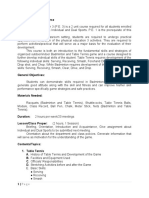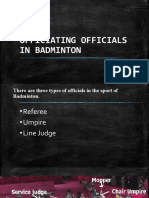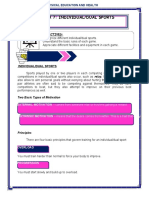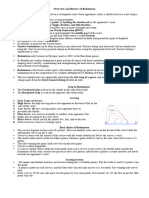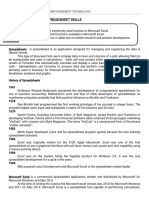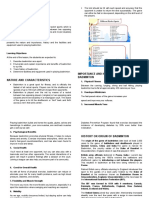100% found this document useful (6 votes)
16K views13 pagesChapter 1 Badminton Module
The document provides information about the game of badminton. It discusses the history and origins of badminton dating back to ancient Greece, China, and India. It describes the basic equipment used in badminton including the court, net, shuttlecock, and rackets. It outlines the basic rules and scoring system for singles and doubles matches. It also explains some key skills in badminton like gripping techniques and serving.
Uploaded by
Jerelyn DumaualCopyright
© © All Rights Reserved
We take content rights seriously. If you suspect this is your content, claim it here.
Available Formats
Download as PDF, TXT or read online on Scribd
100% found this document useful (6 votes)
16K views13 pagesChapter 1 Badminton Module
The document provides information about the game of badminton. It discusses the history and origins of badminton dating back to ancient Greece, China, and India. It describes the basic equipment used in badminton including the court, net, shuttlecock, and rackets. It outlines the basic rules and scoring system for singles and doubles matches. It also explains some key skills in badminton like gripping techniques and serving.
Uploaded by
Jerelyn DumaualCopyright
© © All Rights Reserved
We take content rights seriously. If you suspect this is your content, claim it here.
Available Formats
Download as PDF, TXT or read online on Scribd
/ 13





















